Additional notes (click to expand)
Horticulture
A clump-forming, fully-hardy, evergreen perennial with over-wintering, leathery, dark green, basal leaves, 5-20cm (2-8in) long, comprising 7-9 oblong to inversely lance-shaped leaflets, toothed towards the apexes. From early winter to early spring, stout, purple-marked stems bear shallowly saucer-shaped flowers, 4.5-8cm (11/3 -3in) across, singly, or occasionally in cymes of 2 or 3 blooms; the flowers are white, sometimes strongly pink-flushed, with greenish white centres, ageing to pinkish white. The flowers are hermaphrodite (have both male and female organs) and are pollinated by bees and flies. Cultivation group 2. H. niger grows to 0.3 m (12 in) high by 0.45 m (18 in) wide. It likes heavy, neutral to alkaline soils in semi-shade; mimicking light woodland.
Brickell, C. (2003), 2nd ed. A-Z Encyclopedia of Garden Plants. Dorling Kindersley Volume I, p.520
H. niger are easy to take care of, with the only maintenance required in early spring or summer.
In early spring, hellebores put up both their flowering stalks and their foliage. The previous year’s foliage tends to be rather unattractive by springtime, and can be removed (using secateurs) without causing harm to the plant. Removing the previous year’s foliage helps display the flowers. Helleborus niger are dormant during the summer months, and should be left alone. To propagate, sow seed in containers in a cold frame as soon as ripe. Lift and divide after flowering, in early spring or late summer. More commonly the Christmas rose are left to go to seed (most species self-sow freely). In commercial production, H. niger are propagated through tissue culture in commercial production. They are susceptible to snails, aphids, leaf spot and black rot..
Brickell, C. (2003), 2nd ed. A-Z Encyclopedia of Garden Plants. Dorling Kindersley Volume I, p.520
Medicinal
Culpeper: “The roots (boiled in vinegar) ... be an admirable remedy against inveterate scabs, itch and leprosy, the same helps the toothache, being held in the mouth, dropped into the ears, helpeth deafness coming of melancholy and noises in the ears; corrected with a little cinnamon (as powder) it purgeth melancholy, resisteth madness.”
Culpeper, Nicholas. (1650). A Physical Directory . London, Peter Cole.
The root is anthelmintic, cardiac, cathartic, diuretic, emetic, emmenagogue, irritant, violently narcotic and a drastic purgative.
Plants for a Future (2017) at www.plantsforafuture.org.uk. http://www.pfaf.org/USER/Plant.aspx?LatinName=Helleborus+niger
link
Nomenclature
The generic name of this plant is derived from the Greek elein ‘to injure’ and bora meaning ‘food’, and is thought to indicate its highly poisonous nature. In Latin, niger means ‘black’ referring to the colour of the roots.
Grieve, Mrs M. (1931). A Modern Herbal, Penguin. Leyel, Mrs CF p.388
According to Pliny, Black Hellebore was used as a purgative in mania by Melampus, a soothsayer and physician; hence the name Melampodium has been given to Helleborus niger.
Grieve, Mrs M. (1931). A Modern Herbal, Penguin. Leyel, Mrs CF p.388
Other use
As a cut flower, this is the only hellebore that stands reliably in water without drooping.
In folklore, Spenser in the Shepherd’s Calendar, 1579, alludes to the use of medicinal use of Melampode (Black Hellebore) for animals… Some people blessed their cattle with this plant to keep them from evil spells, and for this reason, it was dug up with certain mystic rites.
Another story in folklore concerns the notion that stepping on the Christmas rose makes one invisible. That story about invisibility seems to originate with Mrs Grieve as she says: ‘In an old French romance, the sorcerer, to make himself invisible when passing through the enemy's camp, scatters powdered Hellebore in the air, as he goes.’
Grieve, Mrs M. (1931). A Modern Herbal, Penguin. Leyel, Mrs CF p.388
In the past, the powdered root was used as a snuff. However, this is not advisable as this plant is very poisonous.
Plants for a Future (2017) at www.plantsforafuture.org.uk. http://www.pfaf.org/USER/Plant.aspx?LatinName=Helleborus+niger
link
Notes by Henry Oakeley from Lindley's 'Flora Medica' (1838): The Christmas Rose, flowering in March/April in the Garden of 2, St. Andrew’s Place, was thought to be the ‘black hellebore’ described in ancient literature and identified as a narcotic acrid poison. He lists the results of ingesting a medicine made from boiling the rhizome, giving the familiar syndrome of many poisonings – vomiting, coma, delirium, convulsions and death. Nevertheless, in Lindley’s time it was employed as an ‘emmenagogue’ (to promote menstruation) and ‘hydragogue’ (to cause a watery diarrhoea, although it is difficult to understand why one should wish this).
Lindley, John. (1838). Flora Medica, Longman, Orme, Brown, Green & Longmans
Dioscorides [70CE] says about the ‘Black Hellebore’, called Melampodium (identified as Helleborus cyclophyllus) that it has greatly divided leaves like a plane tree and is poisonous and induces purging, but has many more uses including epilepsy, curing fistulas, skin disorders, white skin patches, lichen-like skin disorders and leprosy, madness, arthritis, paralysis and abortifacient. Harvesting it required elaborate rituals to remain safe. It is this plant, the Helleborus, which cured the mad daughters of King Proetus.
Gunther, R.T. (1938). The Greek Herbal of Dioscorides ... Englished by John Goodyear.
Phytochemistry
Active principles: aerial parts: cardiac glycosides (bufadienolides), hellebrin, steroid saponins (helleborin), ranunculoside, alkaloids (celliamine, sprintillamine).
Wink, M. (2009). Mode of Action and toxicology of plant toxins and poisonous plants. Mitt. Julius Kuhn-Inst. 421:93-111. p.99
Toxicity
Class 1a: Extremely hazardous: cardiac glycosides inhibit Na+,K+-ATPase, cardiac glycoside intoxication, vomiting, gastroenteritis with violent diarrhoea, delirium, convulsions, arrhythmia, death by respiratory arrest, alkaloids have similar properties as veratrine and aconitine.
Wink, M. (2009). Mode of Action and toxicology of plant toxins and poisonous plants. Mitt. Julius Kuhn-Inst. 421:93-111. p.99
Used to be used to kill intestinal worms and presumably a dose just sufficient to kill the parasites was too small to kill the patient. It was used to kill lice but the sap causes dermatitis so, all in all, it is best avoided. Many other plants in the family Ranunculaceae, to which Helleborus belongs, contain numerous toxins. The name derives from the Greek, meaning ‘to injure + food’, and niger, meaning ‘black’ refers to the colour of the roots. A poisonous plant containing cardiac glycosides, that when eaten may cause the classical triad of coma, convulsions and death, but on the way causes vomiting and purging, and symptoms similar to those of digoxin poisoning with bradycardia and also bundle branch block, ventricular fibrillation and asystole.
Oakeley, Dr. H. F. (2013). The Gardens of the Pharmacopoeia Londinensis.
All parts may cause severe discomfort, if ingested, and the sap may irritate skin on contact.
Toxicity due to tropane alkaloids.
Professor Anthony Dayan, 2021
Toxic due to cardiac glycosides
Professor Anthony Dayan, 2022
Geographical distribution
- Europe, Middle Europe, Austria
- Europe, Middle Europe, Germany
- Europe, Middle Europe, Switzerland
- Europe, Southeastern Europe, Italy
- Europe, Southeastern Europe, Yugoslavia
Helleborus niger L.
Family: RANUNCULACEAEGenus: Helleborus
Species: niger L.
Common names: Christmas rose; Black hellebore
Pharmacopoeia Londinensis name: Elleborus Niger
Distribution summary: The Alps
Habit: Perennial
Hardiness: H5 - Hardy; cold winter
Habitat: Woods, thickets, banks
Garden status: Currently grown
Garden location: Pharmacopoeia Londinensis 1618 'Roots' (HSE 2B)
Flowering months: March, April
Reason for growing: Medicinal, toxic
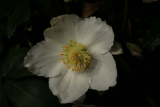
.JPG)
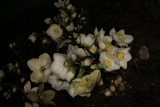
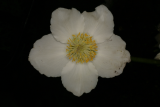
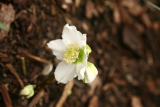
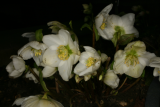
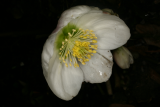
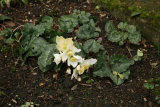
.JPG)
.JPG)
.JPG)
.JPG)
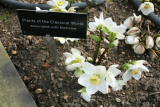

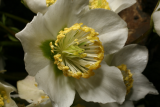
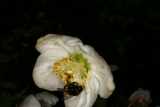
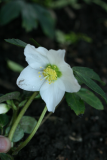
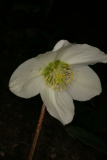

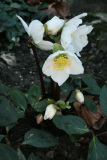
.JPG)
.JPG)
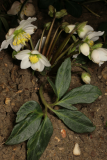
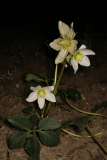
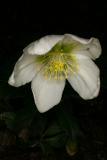

.JPG)